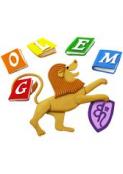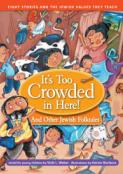- Home
- Play & Learn Home
- Online Enrichment
- Experience Modern Israel
- Israel It's Complicated
- Jewish and Me
- Jewish Holidays Jewish Values
- Jewish Values in Genesis and Jewish Values in Exodus
- Min Ha’aretz
- Our Place in the Universe
- Simply Seder
- The Prophets: Speaking Out for Justice
- Making T'filah Meaningful
- Make, Create, Celebrate
- Yom Haatzmaut Resources
- Hebrew Apps
- About The OLC
- What is the OLC?
- Introduction
- Get Started
- Resources
- OLC Content
- Parent Materials
- See My OLC Classes
- Store
Case Study: A Glimpse into a Day School's Textbook Adoptions
By Tirza Dalkoff
I routinely walk the halls of our school, popping in to visit classes. Last month, the sound of lively music drew me in to a second-grade Hebrew class where the children were happily singing along with the Shiru Shalom Ivrit music CD and loving every minute of it. Shalom Ivrit is new in our school. Why did we adopt it?
 Developing new and meaningful curriculum is an ongoing process for us. When Shalom Ivrit was published, we realized it was time for us to move on from our old Hebrew books. We wanted more modern looking, child friendly, and vividly illustrated books in our curriculum, books that would energize the teachers and thus the students. We also wanted to accommodate the different learning styles of individual students by combining visual, auditory, and kinesthetic modalities of learning. Shalom Ivrit met all of these criteria.
Developing new and meaningful curriculum is an ongoing process for us. When Shalom Ivrit was published, we realized it was time for us to move on from our old Hebrew books. We wanted more modern looking, child friendly, and vividly illustrated books in our curriculum, books that would energize the teachers and thus the students. We also wanted to accommodate the different learning styles of individual students by combining visual, auditory, and kinesthetic modalities of learning. Shalom Ivrit met all of these criteria.
Our teachers were instrumental in the adoption of this new series. Indeed, they regularly contribute to the decision to adopt new materials. They provide feedback about all materials under consideration, then, once the final selection is made, they meet with the Hebrew or Judaic coordinator to prepare for their specific classes.
That’s why, when our teachers recommended using Shalom Ivrit together with the Shiru Shalom Ivrit 1 music CD as a set induction for each new chapter, we took it very seriously. We adopted their recommendation, and have been pleased with the results. As they predicted, the catchy melodies are easily learned and, since the lyrics include new words from each chapter, students quickly become familiar with the vocabulary in the textbook. The word cards make handy visuals and are stored in a pocket chart for easy reference.
Shalom Uvrachah is another recent adoption, this time in first grade. Like a breath of fresh air, this modern primer replaced the old fashioned reader we had been using. Shalom Uvrachah teaches decoding through the use of letter and sound identification, sight reading and phonetic analysis, and is complimented by pictures and illustrations with Judaic content.
We considered Shalom Uvrachah favorably for its interactive CD since one of our goals is to involve families in their children’s education. At  back-to-school night, we demonstrated the CD to parents and taught them how it can help reinforce Hebrew skills at home. At the end of each Shalom Uvrachah lesson, we send home a Family Companion activity with transliterated reading. And we use the Funbook for additional activities to reinforce each lesson at home. These materials allow families to actively participate in their children’s religious school education.
back-to-school night, we demonstrated the CD to parents and taught them how it can help reinforce Hebrew skills at home. At the end of each Shalom Uvrachah lesson, we send home a Family Companion activity with transliterated reading. And we use the Funbook for additional activities to reinforce each lesson at home. These materials allow families to actively participate in their children’s religious school education.
We incorporated Hineni into our prayer curriculum because it answered our need to teach prayer through root words and phrases and to reinforce preparation of brachot and tfillot for our b’nai mitzvah.
Our Hebrew curriculum was now ship-shape, but Judaica still had gaps, especially in the study of Israel. We recently adopted The Great Israel Scavenger Hunt in second grade because the text and photographs not only teach about geographic regions and cities, but also about everyday life in Israel. In the fourth grade, we selected Welcome to Israel because it integrates the study of Israeli geography, history, Bible, Zionism, and government.
We’ve adopted Let’s Discover Mitzvot in first grade for the same reason we use all the other Let’s series: they are colorful and the students take the folders home to share the lesson with their parents. And we immediately seized on Challenge and Change: History of the Jews in America in seventh grade since we’d been lacking a strong Jewish history text and thought it a good precursor to the American history in the students’ eighth grade secular curriculum.
How do I become aware of new publications? For me, the best way is to examine them “in the flesh.” That’s why I depend on the Golem package that arrives periodically on my desk. It’s a big help in my ongoing search for new materials and a great way for me to build a resource room.
 |
| Tirza Dalkoff is Principal of the Elementary School at Jacobson Sinai Academy in North Miami Beach, Florida. |







